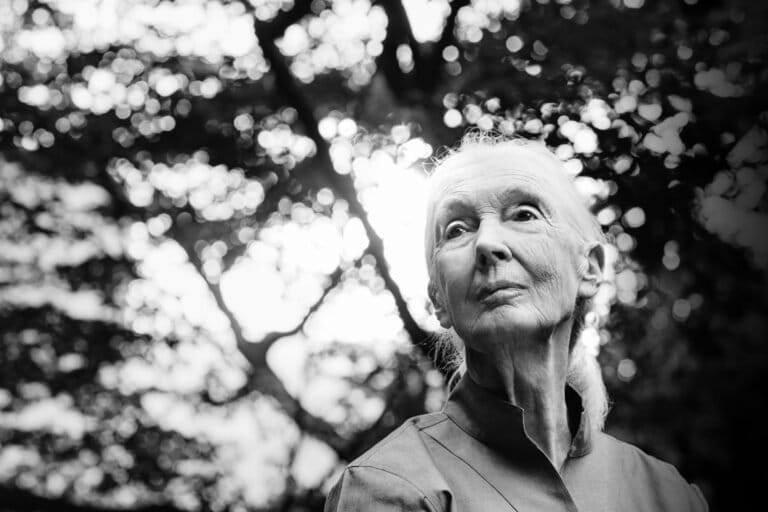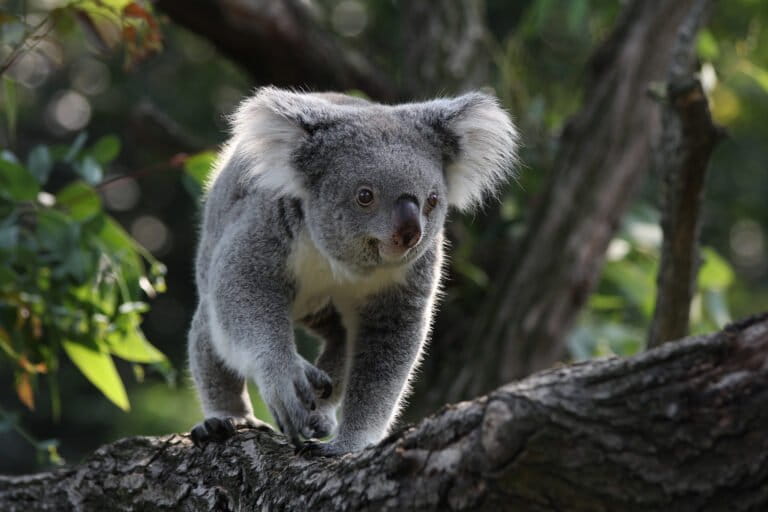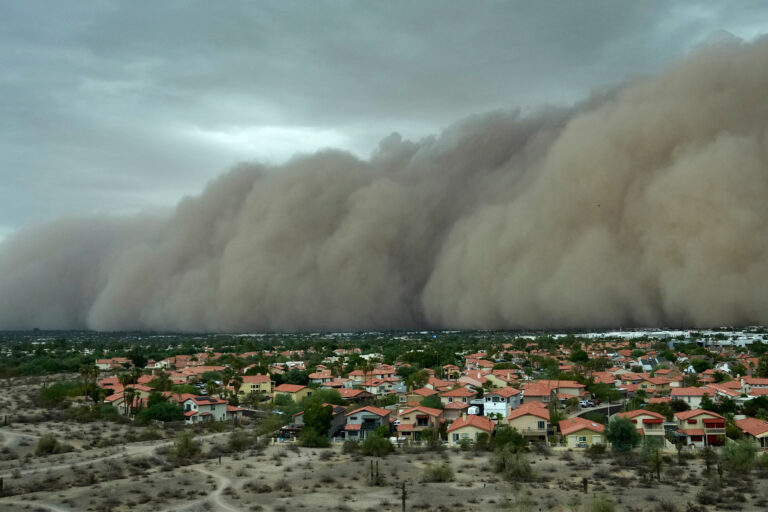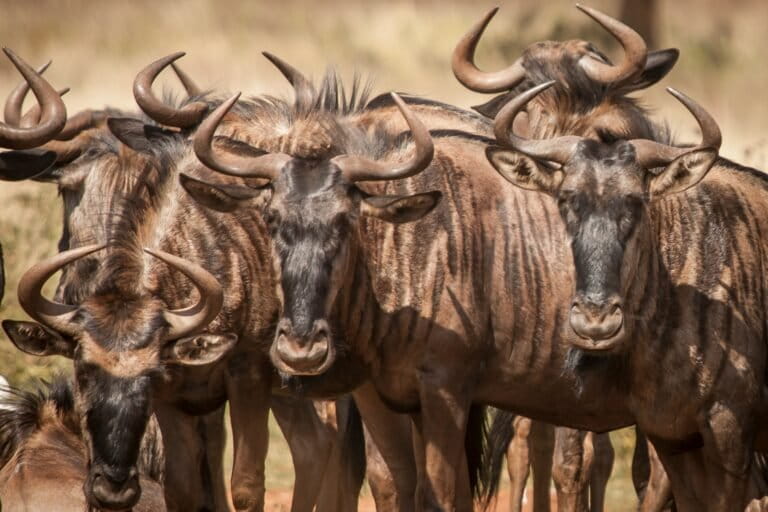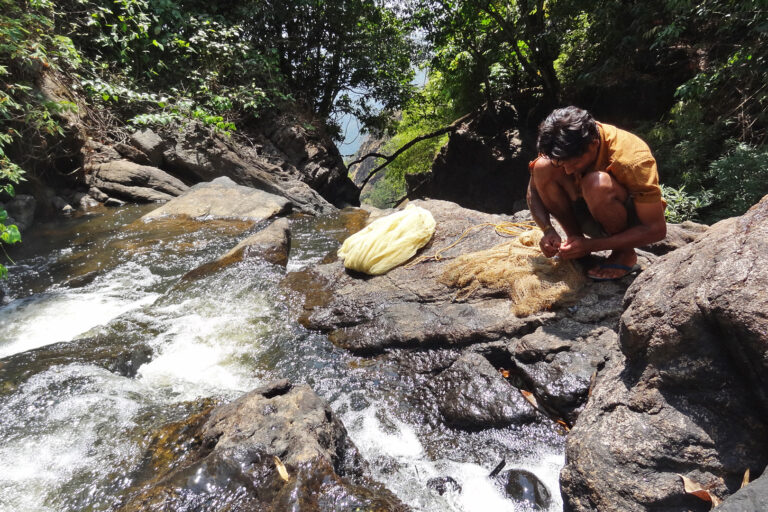- Church forests, patches of forested land surrounding churches as protected areas, started out as a tradition in the early days of Christianity in Ethiopia and still endure today.
- Many of these forests protect some of the country’s last standing forests, brimming in biodiversity and a tranquil sense of harmony on Earth.
- Monks and nuns at one of the country’s oldest and most revered monasteries say they believe the forests, like all creation, are a sacred gift from God and play a vital role in maintaining the spiritual and physical well-being of people.
- In this exclusive interview, Mongabay speaks with two monks living in these ancient monasteries about their connection to the forest, how they conserve them, and the role Orthodox Christianity plays in their relationship to all life.
BAHIR DAR, Ethiopia — The Zege Peninsula, a hidden gem on the southern shore of Lake Tana, is a serene escape in Ethiopia’s north. As the boat glides across the tranquil waters, Zege’s verdant silhouette emerges on the horizon, framed by lush greenery and small islands. Disembarking, we followed a winding path through majestic forests. At the end of the trail: Ura Kidane Mihret, the peninsula’s oldest and most revered monastery, surrounded by seven ancient churches and smaller monasteries.
On the sacred grounds of Ura Kidane Mihret, Aba Gebresilase Abebe, donning a humble black robe and traditional monk’s hat, found peace under a shaded tree. He is one of the monks who has spent years in this ancient monastery. Surrounded by ancient trees where birds and primates gracefully move, only birdsong fills the tranquil air, offering a deep sense of peace and connection to nature and the creator of all life.
“Can you find such trees anywhere else now?” Aba Gebresilase asks, touching the trunk of a huge African pine (Podocarpus falcatus). Around him are other large conifers and evergreen trees locally known as wanza (Cordia africana) and warka (Ficus vasta).
“Some of these are ancient trees, which are barely found elsewhere. There are also many trees indigenous to this place alone. I can’t imagine this place without the trees. Without the forest, the church would be ordinary, lacking the unique spirituality it currently has,” Aba Gebresilase says. “That is why we are protecting them.”

With a rich and ancient history dating back to the earliest days of Christianity, the Ethiopian Orthodox Tewahedo Church (EOTC) is one of the oldest in the world. Tradition holds that the Ethiopian eunuch baptized by the apostle Philip as mentioned in the New Testament was one of the first converts to Christianity and returned to Ethiopia to spread the faith. Over the centuries, the Church in Ethiopia developed unique practices and beliefs, blending elements of Judaism, Christianity and Indigenous Ethiopian traditions.
Part of these unique traditions are the Ethiopian Orthodox Tewahedo Church Forests, often referred to as simply as the church forests, and found mostly in the highlands of Ethiopia.
As Christianity spread across the region, the Church began to establish monasteries, churches, and religious communities. These early Ethiopian Christians believed in the significance of preserving the natural environment as an integral part of their faith.
They regarded the forests as a sacred gift from God that played a vital role in maintaining the spiritual and physical well-being of the people. Over time, these religious communities began to set aside patches of forested land surrounding their churches as protected areas. These church forests were considered holy grounds, and access to them was restricted to religious ceremonies and activities. As a result, these isolated pockets of forest are now sanctuaries for a diversity of threatened and endemic bird species, mammals and plant life.
For Aba Gebresilase, protecting the church forest is a spiritual duty inherited from his forefathers. “Our ancestors conserved these forests and passed them down to us and it is our responsibility to preserve them and teach young monks with the knowledge and skill to pass them to the future generation,” he tells Mongabay.
In many parts of Ethiopia, the forests surrounding churches and monasteries are among the last in the country. At the beginning of the 20th century, 40% of Ethiopia was covered with forest; today, it’s less than 15.5%, mostly due to land being cleared for agriculture to feed the growing population. These wooded sanctuaries now remain primarily in remote areas or around Ethiopian Orthodox churches and monasteries. More than three-quarters of the 35,000-plus churches across Ethiopia are surrounded by forests protected by monasteries and parishes, according to the World Council of Churches.
Inside one of the churches at Ura Kidane Mihret, we meet an old man from the area. Belay Kebede, 69, was born and raised in Zege and has spent his entire life in the local villages around Ura Kidane Mihret. According to him, the community views the forests as spiritual sanctuaries, leading to strict prohibitions against cutting trees and farming, which have ensured their preservation.
“The monks have always taught us how important it is to protect our church forests. Their teachings have shaped how we take care of nature in our community, and this has been going on for generations,” he tells Mongabay.
For Kebede, the fact that locals can also benefit from the forest land by cultivating coffee within it in an agroforestry model also strengthens their appreciation for its preservation. But he says he’s worried that the growing population may lead to increased encroachment on the forests and deforestation, posing threats to their preservation. In the buffer area of the forest, where farmlands meet the church forest, signs of this encroachment are already visible.

Mongabay traveled to one of the ancient monasteries on the islands of Lake Tana and spoke with two monks from the Ura Kidane Mihret monastery: Aba Haymanot Anagawu and Aba Gebresilase Abebe. This exclusive interview covered topics ranging from religion, to the value of life, to how the Orthodox Church is conserving Ethiopia’s remaining biodiversity hotspots. The following interview was translated from Amharic and lightly edited for length and clarity.
Mongabay: What do church forests remind you about the state of being human, about relating to the world, about being a child of God?
Aba Haymanot Anagawu: Church forests make me think about the deep connections between us humans, our place in the world, and our identity as God’s children. Those forests surrounding the church? They’re like special gifts from God, meant for us to enjoy and protect. It’s on us to make sure they stick around. They’re like a visible reminder of how God wants us to take care of nature, which is pretty amazing because nature gives back to us too, providing what we need to survive. Think about plants giving us oxygen, for example! So, it’s not just about looking out for ourselves; it’s about taking care of everything around us, including plants. This shows the unique bond we have with nature, highlighting that it’s not just about us but about all living things.
Mongabay: What specific rituals, beliefs, values and practices kept these ancient forests standing over millennia?
Aba Gebresilase Abebe: We’ve kept church forests because they are very important to us spiritually. We see them as a piece of the Garden of Eden and heavenly paradise. These forests are part of God’s plan to protect all life, including many plants and animals. The sacredness of the church grounds strengthens this idea. Our churches are not just for prayer; they are seen as God’s home, and the forests around them are part of the church. They protect the Tabot, the Ark of the Covenant [a chest said to carry the original Ten Commandments given to Moses], making the area holy. This holiness means we must protect the forests and avoid cutting trees.
In the past, Ethiopian saints and monks lived in harmony with nature, sometimes even with wild animals like lions and leopards. These stories inspire us to keep to our traditions. By linking our spiritual beliefs with caring for the environment, we’ve protected church forests. They are important sanctuaries for nature and our culture. This relationship shows why it’s important to protect these forests for future generations, keeping them as places of spiritual and ecological significance.

Mongabay: What social functions do these church forests facilitate?
Aba Haymanot Anagawu: When thinking about church forests, their importance goes beyond just spiritual value. These forests are vital community spaces. They offer cool shade under tall trees, where farmers and cattle herders gather to eat lunch and rest. They also play a big role in our social values and traditions, acting as places for traditional courts, and space for conflict resolution where people gather for dialogues and discussions. We also enjoy berries from the forest, which helps us feel connected to nature.
Plus, we find medicines from these forests. People here use plants and herbs as natural remedies for sickness. The Bible talks about God teaching Noah about medicines, many of which come from plants. There are monks who have great skills and knowledge in identifying which plants can cure specific diseases and knowing when and where these plants grow.
Mongabay: Can you speak a bit about your connection to this particular place? What does this land and forest mean to you and the monks?
Aba Gebresilase Abebe: Living here, whether it’s day or night, is just beautiful. The peace you feel, spending days under tree shade with birds singing, it’s enchanting. We wake up to bird melodies, and the smell of plants adds to the spiritual vibe here. This place isn’t just where we live; it’s deeply spiritual for us.
When I’m in town, I often feel uneasy and really want to get back. Being in cities for too long makes me feel sick. Monks who travel far to cities also really miss our home and rarely leave it. We have a strong connection with the forest, water and all life here. We wash our bodies in the waters. We feel at ease praying and studying in the shade, living in sync with nature for years. We can’t disconnect from this natural setting. Long stays in cities usually make us uncomfortable; our bodies are used to the fresh air and environment here.

Mongabay: How are priests, monks or nuns trained to relate to forests? Are there fewer followers who come to the church forest to train to become priests, monks or nuns?
Aba Haymanot Anagawu: Lake Tana’s monasteries are still popular, attracting many new students every year. We train priests, monks and nuns to respect and care for forests.
We educate our new students on the importance of protecting trees and using them responsibly. Monks, who live in small wooden huts, make sure to use old trees or fallen branches instead of cutting new ones, showing our commitment to conservation. This way, conserving the forest becomes a natural part of our monastic life, something passed down through generations. These teachings are recorded in our traditions and manuscripts, and we make sure to pass this knowledge on to everyone who comes here for training.
Mongabay: Is there a duty to care for forests as an act of faith?
Aba Haymanot Anagawu: Yes, there’s a strong commitment to care for forests as an act of faith. We believe it’s crucial to preserve God’s creation, and forests are seen as sacred gifts that sustain both our physical and spiritual lives. Everything in the forest, from the trees to the plants and all living beings, is considered part of God’s creation.
Our holy scriptures and ancient traditions teach us about the sacredness of forests, emphasizing the need to cherish and protect them. As monks, it’s part of our spiritual duty to care for these forests and live in harmony with nature. This tradition goes back to the early monastic fathers who nurtured both plants and animals in church forests.
Our commitment to caring for the forests is deeply rooted in our daily practices and reflects our belief in stewardship of the Earth as a fundamental aspect of our faith. We see preserving these forests as a way of honoring God’s creation and maintaining the sanctity of our holy places. Cutting down these forests would disrupt this sacred balance and go against our faith’s teachings.
To clarify, while we see the church forest as sacred, we don’t worship individual trees.


Mongabay: Is conservation focused only on the forest, or on the biodiversity, sources and water tables that make up the forest too?
Aba Haymanot Anagawu: We deeply respect every species in nature, including animals and plants. We believe every form of life should be valued and not harmed unnecessarily. This principle extends even to the smallest creatures, like ants. The Bible has passages that emphasize the importance of all creatures, showing God’s ability to create diverse life.
For instance, in Genesis 1:25, it says, “God made the wild animals according to their kinds, the livestock according to their kinds, and all the creatures that move along the ground according to their kinds. And God saw that it was good.” This verse shows that each creature has inherent value and goodness in God’s eyes. All forms of life are part of God’s creation plan and deserve respect and care.
We recognize that all species are interdependent. We cannot separate trees from the soil, as trees provide water, which is the source of life. The water sustains many lives in the lake, making it the center of all species here. We value all species equally and protect them. When a water hyacinth infestation threatened Lake Tana, the monks in the monastery joined efforts to clean the weeds, showing our concern for the ecosystem’s well-being.
Observing nature, we appreciate God’s works. Every creature is a testament to His diversity and craftsmanship. Look at the plants and animals — they vary in appearance, color, shape and size. Plants and animals in the highlands differ from those in the lowlands, each serving a purpose in God’s plan. As humans, we have a responsibility to preserve His creations and maintain the balance of nature.

Mongabay: How do you balance the spiritual significance of the church forests with the need for sustainable development in the region?
Aba Gebresilase Abebe: As I mentioned earlier, we deeply respect and value the natural resources provided by God. We believe these resources — plants, water and trees — are divine gifts meant to be used responsibly. We recognize their practical uses for medicine, fragrance, shade, food and building materials, but we also emphasize sustainable practices. For instance, in our church, we use wood for cooking, but never cut younger trees. Instead, we rely on old trees and fallen branches. We also plant new trees to ensure the forest stays healthy for generations. Historically, even when churches depended entirely on wood for power, they were surrounded by dense forests because of these responsible practices.
This approach extends to the local community near us, who traditionally only use dead plants and avoid cutting live trees. However, growing populations and economic challenges have made it difficult to maintain these practices. The younger generation, facing low income and high unemployment, sometimes turns to the forest for income, selling wood or clearing land for agriculture. This shift is troubling, but we understand the economic pressures behind it.
Despite these challenges, the community still plays a crucial role as guardians of the forest. Many community members appreciate the significance of the trees and actively work to protect and preserve them. The older generation, in particular, strives to pass down traditional knowledge and sustainable practices. Without the community’s dedication, the forests would face even greater threats. Thanks to their efforts, and our continued emphasis on responsible stewardship, the church forests continue to survive and thrive, balancing spiritual significance with sustainable development.

Mongabay: Do you have any last thoughts you’d like to share?
Aba Gebresilase Abebe: I can’t imagine this place without the trees. Without the forest, the church would be ordinary, lacking the unique spirituality it currently has. The forest is like a monk’s beard — it’s a symbol of tradition and a crucial part of the church’s identity.
There’s an old saying that goes, “A church without a forest is like a monk without a beard.” This shows how important the forest is for the church. It’s not just trees; it’s a connection to our spiritual past, passed down by our ancestors who protected these trees for years. Both monks and believers value these forests deeply. When people come to the church, the trees provide shade and a sense of connection to nature, making us feel closer to God’s wisdom. They create a peaceful and spiritual atmosphere where monks and believers can pray and find calmness. The forest brings something special to the church — it’s more than just trees; it’s part of our spiritual home.
Banner image: Aba Gebreselassie stands near a big tree in the forest around Ura Kidane Mihret Monastery in the Zege peninsula, Ethiopia. Image by Solomon Yimer for Mongabay.
Tested by COVID and war, an Indigenous conservation system in Ethiopia prevails
Latest Mongabay podcast episode: In ‘the century of Africa,’ Mongabay’s new bureau reports its biggest environmental issues and solutions. Listen here:
FEEDBACK: Use this form to send a message to the author of this post. If you want to post a public comment, you can do that at the bottom of the page.







